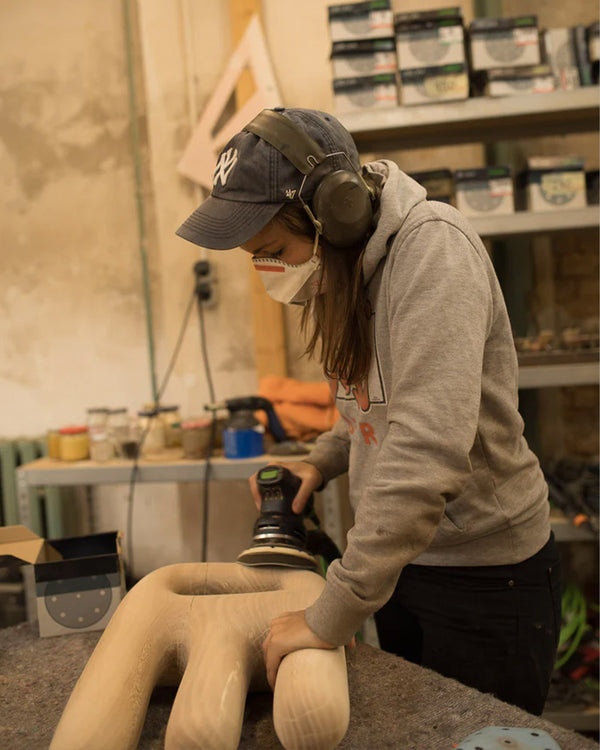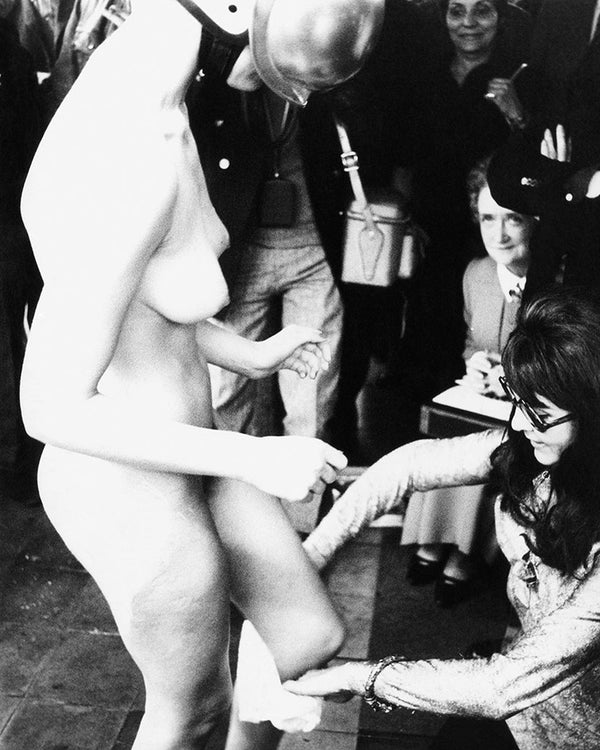DANIEL
TURNER
EMP
STEP
2017 | by Nils Markwardt
»I’m intrigued by the idea that when one walks through the doorway
you come to the realizatio that you’ve just stepped over twelve years of work.«
»I’m intrigued by the idea that when one
walks through the doorway you come
to the realizatio that you’ve just stepped
over twelve years of work.«


Daniel's been in a kitchen his entire life, and I had just dissolved one, so there was this spark of immediate interest.
Later, Humm contacted the artist and befriended him, leading Turner to create his work EMP Step, which was inaugurated in Eleven Madison Park’s main room in celebration of its reopening in the fall of 2017. In this work, Turner obtained the restaurant’s kitchen in its entirety—including all its fixtures—melted it down, and formed one massive monolithic step. It is only by crossing this threshold that one can enter the restaurant’s dining hall, which British magazine Restaurant recently deemed it to be the finest in the world.



It’s Magic!
In his 1917 lecture “Science as a Vocation,” Max Weber succinctly summed up the nature of modernity in one word that doesn’t seem to have lost any of its meaning over the years: disenchantment. What the sociologist meant by this is that progress involves the gradual dismantling of magical thinking. While in premodern times belief wielded power as impulsively as it was invisible—seen, for instance, in the sudden intervention of a worshipped force—the modern world is predicated on the literal. Where bureaucratic principles of organization, scientific methods, and minutely calculated production processes heralded the age of rationality, our collective belief in magic (for example, animist fetishism or the idea of objects inhabited by ghosts and gods) was banished to the realm of mythology.
We are reminded of the accuracy of Weber’s diagnosis every day. Maybe more than ever. Today, technological and scientific progress is defined by increasing calculability and predictability, from the discovery of previously unknown pathogens to algorithmically increased dating efficiency, through to daily self-monitoring with step counters and fitness trackers. The paradox is that behind this gradual hyper-rationalization, the modern age also developed its very own kind of reenchantment, the enchantment of materials. Because, strictly speaking, very few of the thousands of things that a citizen of the twenty-first century encounters on a daily basis are what they seem.
Although we take most everyday objects for granted, they are in fact the product of a theatrical history of materials, a long and equally intricate act of disguise, which is the result of the interplay between resource and labor. Every wooden chair, every washing machine, and every smartphone not only conceals countless remodeled and processed raw materials, but also hours of work performed by humans and machines. And it was precisely this exchange that Karl Marx, no less, understood with perfect clarity. When he talked about “commodity fetishism,” he didn’t only mean that capitalism was characterized by a form of consumerist idolatry—the quasi-hypnotic power of glittering shopping arcades seducing the collective consciousness—but also that collaboratively produced commodities conceal the history of their production process with the cover of exchange value. Or put more simply, the chair whose social value is only determined by its price does not say anything about the countless transformations it underwent after the wood it is made of was cut from the tree. Thus, capitalism, as the philosopher Peter Sloterdijk once said, can be seen as “the biggest changing room in history, and as an agency for the mass-industrial enchantment of human labor, machines, and raw materials commingling and transforming into commodities.
Artist Daniel Turner’s works draw attention to this concealed enchantment by literally deconstructing things—the contents of a waiting room, cafeteria, or kitchen—breaking them down into their constituent parts only to put them back together again in new ways. A prime example is his work EMP Step (2017), in which around one thousand objects from an old restaurant kitchen were molded into the shape of a staircase. Here, Turner illustrates the theatrical history of materials by stripping them down and dressing them up in a new costume. By producing a literal kitchen in step form, Turner makes the act of enchantment transparent, and exposes the everyday disguising of materials, something that usually remains unseen. You could also say that Turner’s transformed kitchen disrupts our apparent hyperrational modern age, if only for a moment, to reveal the magical metamorphosis of materials.






